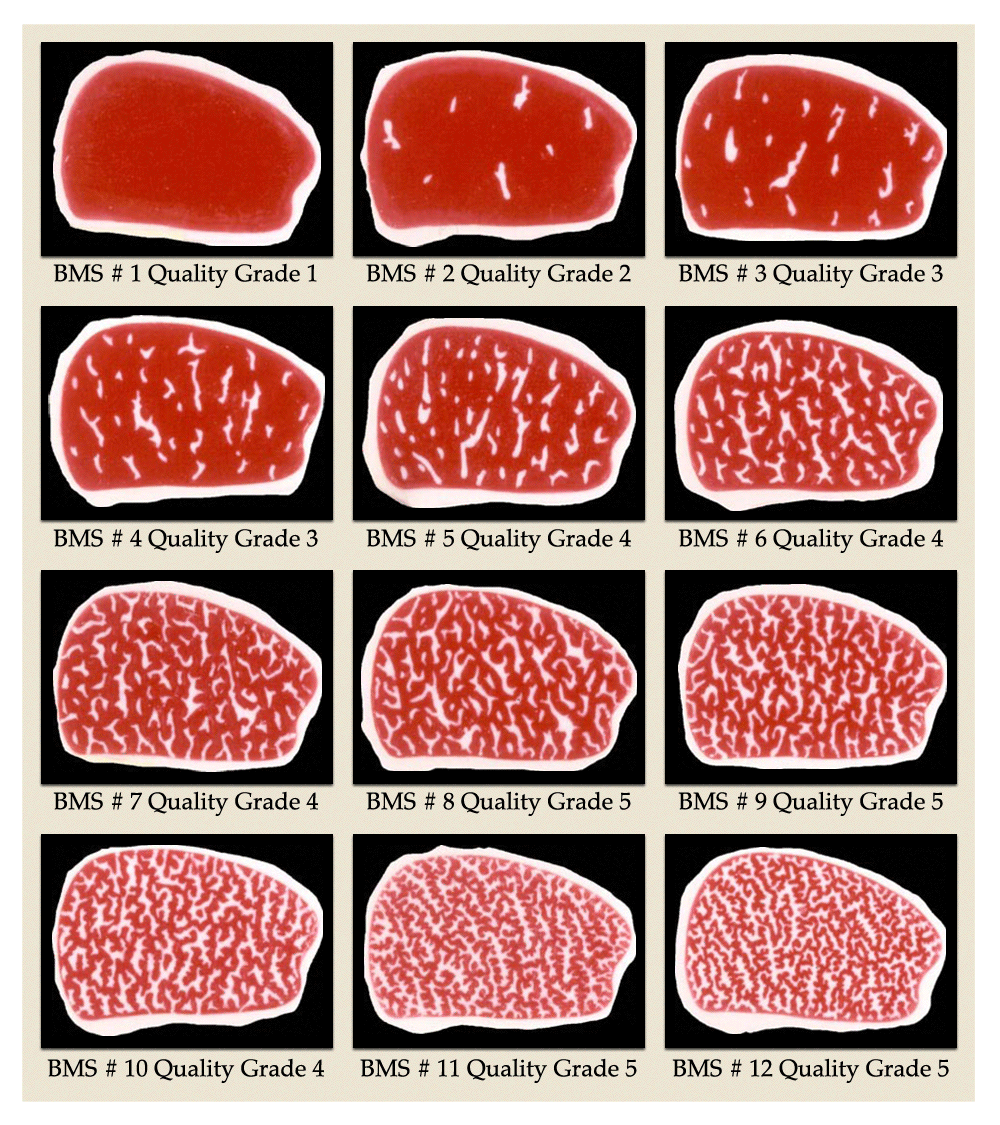
See also Tips: Steaks and Cow Parts
Buying your Hamburger
- 80/20 lean has the best fat to meat ratio for grilling
- What does 80/20 or 85/15 mean? If ground beef has 20 percent fat and 80 percent lean beef, it is good for grilling, but not necessarily good for you. To be called “lean,” ground beef, it must have a lean point of 92% lean (or higher) and only 8% fat . “Extra lean” ground beef must have a lean point of 96% lean or higher.
- Another good meat option is 1/2 LB ground chuck mixed with 1/2 LB ground brisket
- MARBLING EQUALS FLAVOR
– SELECT is right around BMS Grade 3
– CHOICE is right around Grade 4
– PRIME is right around Grade 5 - Select a piece of chuck with lots of marbling and have your butcher grind it (yes, there are people behind those doors — just ring the bell).
- Ask for a “coarse” grind.
- You can also grind the meat yourself with a meat grinder or chop in the food processor (cut into 1- to 1½-inch cubes first).
An advantage to this is that there are fewer worries about contamination and you can safely cook your burgers medium-rare, if that’s how you like them. A chef’s favorite that I see on TV a lot is 1/3 chuck, 1/3 shoulder and 1/3 short ribs. - Try different combinations of meat. Almost any kind of ground meat can be used to make burgers, or mix together different ones. I’ve heard of mixing pork with beef, chicken with lamb, or even buffalo with beef. For flavor, try mixing some fresh sausage in with another type of meat.
- A good combination is half short ribs, half brisket with an extra handful of fat thrown in.
Prepping your Meat for Cooking
- When making your patties, don’t handle the meat too much. It will become mealy. The heat from your hands begins to melt the fat and makes the patty too dense. Move it lightly from hand to hand and loosely make a patty no thicker than one inch, or you will have to cook it too long).
- When adding other ingredients to ground meat, use a spoon or spatula to avoid heating the meat with your hands
- Make an indentation in the center of the meat. Have you noticed that your burgers tend to form rounded tops when cooking, causing the condiments to slide off? If you push down slightly in the center, creating a round area about ¼ inch lower than the surrounding meat, your finished burger will come out flat.
- Many people just want great beef, straight up with salt and pepper. But it’s also fun to add flavors, and if you are using leaner meats, or leaner cuts of beef, you can add moisture at the same time. Finely minced vegetables such as onion, mushrooms, or mild chilies are especially good for this.
- Worcestershire sauce and soy sauce are common liquids to add to burgers.. About 2 tsp per pound of meat is good.
- You can also take a lean cut of meat and add some olive oil for good fat, or butter for flavorful bad fat; although this will cook faster than meats that are naturally fattier like 80/20 hamburger
- If using lean meat, add moisture or fat to your meat.
Cooking your Meat
- Start charcoal in center in a pyramid, then move to one side
• Direct Heat: Things that cook quickly or to get a sear (steak, chicken skin)
• Indirect Heat: Finish cooking. Also use for flare ups
• Spread out coals for thin hamburgers, zucchini, asparagus, hot dogs, skewered seasoned shallots - Press down gently, but firmly, at the very beginning to get a good sear on the meat. After that, don’t press down on the burgers when cooking. This compresses the meat, making it denser, and also squeezes the juices out of the meat.
- Salt and pepper are a must, but consider garlic powder or onion powder. I personally recommend Grandpa’s Thunder Powder.
- Once your burger is on the heat, don’t move it until it naturally releases. Once it does, flip it. Flip it twice more so that both sides get two cookings each.
- A thermometer is a must-have. I have a page of Kitchen Gadgets with a link to Thermoworks. I recommend both an infrared (or IR) thermometer and an instant read ThermaPen. Cook your meats at least to 145º internal temperature, unless you have ground the meat yourself.
